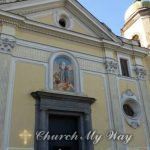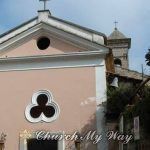Piano di Sorrento, the Corpus Domini of 1940 in the story of Prof. Ciro Ferrigno
Prof. Ciro Ferrigno, a few days after the solemnity of Corpus Domini, tells how this important religious festival was lived in Piano di Sorrento in the distant 1940: “And then you happen to see a little film of the procession of the Corpus Domini of Comm. Ermanno Acanfora 1940.
It consists of two parts, the first concerns the crossing of Piazza Cota, in the second parade on Corso Italia which, in those years, was called Corso Littorio. Being able to see how our country looked like eighty-two years ago is an emotion of no small importance. What really makes an impression is the number of children wearing the First Communion habit and one wonders: were so many born in those years? Are they still alive, or are some of them still among us? On balance, they should be no less than eighty-eight to eighty-nine today.
In those years the party fell on Thursdays and the procession took place on the same day only in the bishops’ seats, with us in Sorrento; in all other parishes, the following Sunday. Children wear a white dress and short or long pants. The girls have a short or long white dress, but you can see the veil that many have in the style of the House of Savoy, fastened around the head by a ribbon.
There is the white flag of First Communions, followed by the pennant of the Association of the Daughters of the Sacred Heart of Jesus, there are many Ivrea nuns who accompany the children and, only at the end there is a nun with a different dress, certainly representing those of the Monastery. After the banner, the confreres of the Santissima Annunziata and the musical band parade; finally there are the priests, who were it is recognized by don Eduardo Mastellone.
The monstrance is carried, I presume, by the pastor of the time Mons. Michele Maresca, while all around the pupils of the Oratory of San Nicola carry the street lamps and have the band with the Luigini lily. Being Sunday, the shops are closed and you notice that, at a certain point, the procession takes Via San Michele, leaving Bar La Scala on the right. In those years, Via and Piazza Delle Rose did not yet exist.
In the serenity of the feast day, many take part in the solemn procession and the doors are prepared with plants and flowers, carpets and blankets, and Eucharistic symbols; on a small table, there are bundles of candles or the envelope with the offering. For the decoration of the doors, many have collected the brooms on the Hills and, next to them, they have placed vases with majestic hydrangeas, the rarest gladioli, and roses grown in the garden.
Balconies and windows are decorated with carpets, tablecloths, and blankets of precious hand-made work and, as the Blessed Sacrament passes, an abundance of petals and flowers rain down.
It is the serene unconsciousness of a moment of village life, of those who do not even remotely imagine that, in a short time, the Second World War.
Many will leave for the front, some will never return, and many of those children will go hungry, and how many times, at the sound of the air alarm siren, they will have to seek shelter in the caves. The short film does not give us the voices, the colors, and that mixture of scents of broom and coffee.
The brooms are sacred to Corpus Domini, the coffee smells like the town’s Sunday. The brooms will remain even in the war years, as eternal as the Body of Christ. The scent of coffee will disappear and with it the Sunday of the village because the war destroys everything ».





